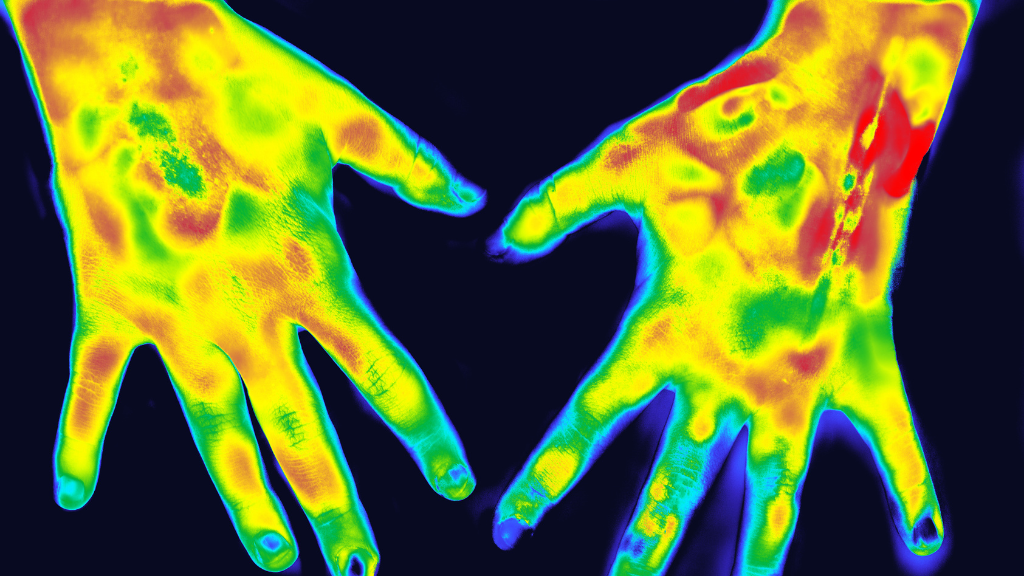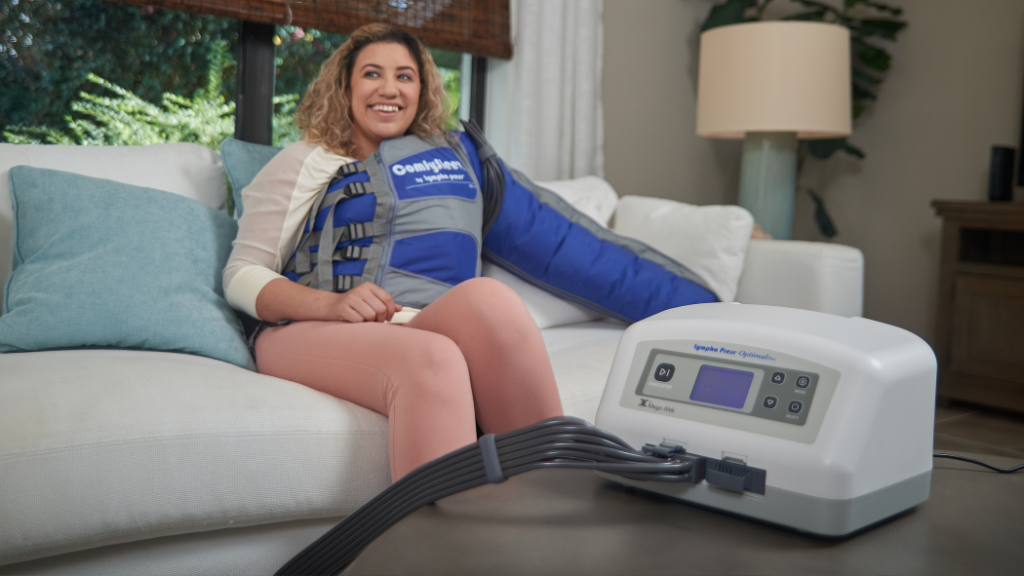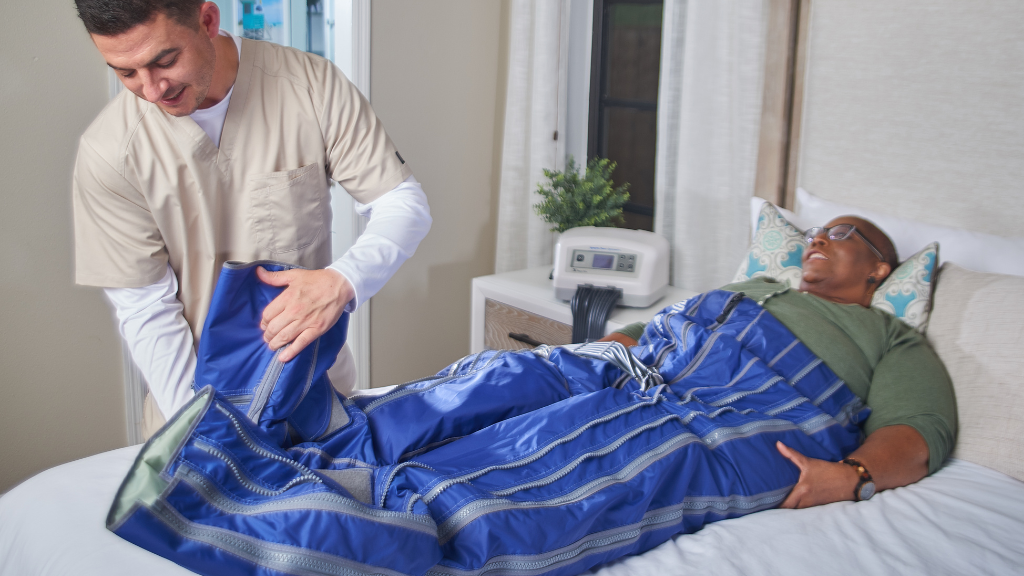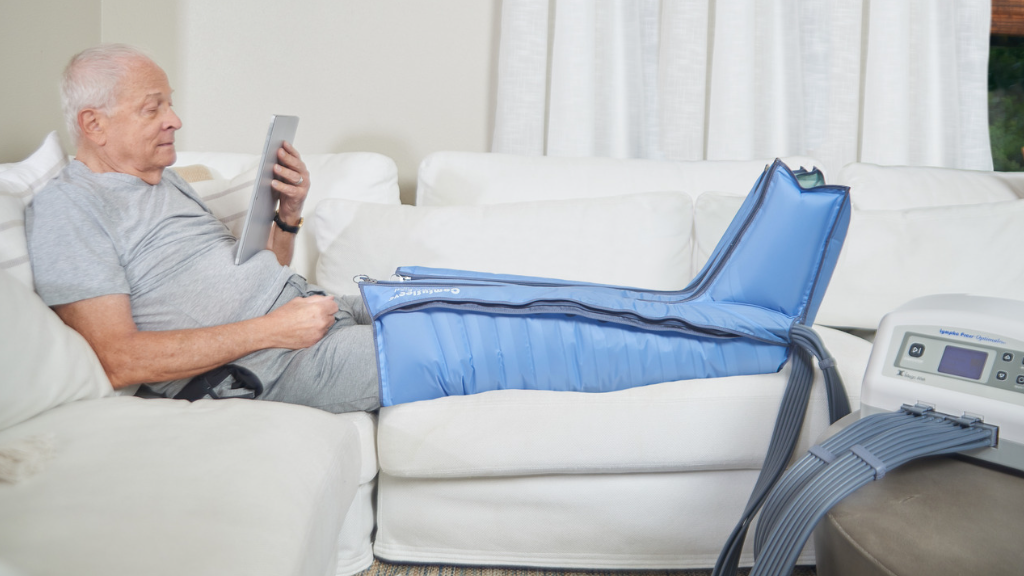Based on the webinar with Dr. Shelley Smith DiCecco
This is a 26-minute read.
Lympha Press recently hosted a pelvic dysfunction and genital lymphedema webinar featuring Shelley Smith DiCecco, PT, Ph.D., CLT-LANA, CI-CS. As the founder of the educational resource center LymphEd, she’s a leading expert in helping lymphedema professionals and patients understand the connections between lymphedema and related conditions.
DiCecco is a Casley-Smith International Certified Instructor and is certified by the Lymphology Association of North America (LANA). She received her Ph.D. from Texas Woman’s University in the Philosophy of Physical Therapy. She also holds a Master of Physical Therapy Degree from the University of St. Augustine and received her Bachelor’s in Special Education and a Pre-Physical Therapy certificate from Clemson University.
Identifying Genital Lymphedema in Clinical Practice
DiCecco begins the webinar by explaining that an understanding of genital lymphedema starts with building a better picture of genital anatomy. When lymphedema is present in the lower abdomen, genitals, and upper thigh region, bodies are often slightly distorted, so the anatomy doesn’t always present as expected. By the time a patient reaches the clinic, they may have so much lymphedema swelling that it’s difficult to assess the body. However, if you know your bony landmarks, you can usually determine the relevant anatomy.
Her process starts with looking over the patient’s body and thinking to herself about where bony landmarks like the iliac crest, pubic symphysis, pubic bones, and sacrum are. The pelvis has approximately 50 muscles attached to its bones, and the shoulders and knees have less than 20 each. With this in mind, one gains an understanding of the complexity of what’s happening in the patient’s body.
DiCecco says, “It’s like a group project when you’re trying to get 50 people working together. It’s not easy to do that. This is the same thing with lymphedema. A lot of times these muscles are not working as they should in synergy, and this can cause problems. Sometimes one moves too much, sometimes one doesn’t move enough, and then things fall out of sync.”
In lymphedema, the patients’ bodies aren’t always operating at peak function and are straining under excess swelling. Doctors might target the arm muscles and leg muscles for arm and leg lymphedema but often forget to target the pelvic muscles to address genital lymphedema.
Dr. Dicecco explains that if you know your bony landmarks, you can find your lymphotomes. Knowing where to palpate allows you to drain the body appropriately and provides clues to rerouting as necessary to address swelling in the genitals.
The Importance of the Pelvic Floor Muscles
Are you considering the impact of the pelvic floor? The pelvic floor muscles are commonly overlooked but are an essential part of the body, as pointed out by DiCecco. Located at the bottom of the pelvis, the pelvic floor muscles support all organs and help the abdominal muscles to control the body’s core.
Stay alert for body distortion, especially in someone with a history of cancer. Says DiCecco, “Often with our patients with genital edema, they’ve had some type of pelvic cancer, and the pelvic floor muscles have been distorted from cancer or just from general lack of use. The muscles have weakened and are not functioning as they should.”
Because the pelvis contains many organs, there is little remaining space for extra fluid. When the body begins adding fluid to the pelvic region, it wreaks havoc on the various organ systems.
The Fifth Function of the Pelvic Floor Muscles
The pelvic floor muscles, which extend up into the abdominal area and support the organs involved with bladder and bowel control, are sometimes misrepresented in anatomical drawings of the pelvis.
DiCecco explains that though the pelvic floor muscles are quite large, they’re often an afterthought in anatomical drawings and don’t necessarily have the prominence they deserve. Textbooks will state that the function of the pelvic floor muscles is to support the pelvis, assist with bowel and bladder control, aid in sexual functions, and aid in childbirth. Says DiCecco, “I challenge textbooks to start putting that there is a fifth function [for the pelvic floor muscles], which is to drain the lymphatics of the genitals and pelvis.”
She also describes a myth about incontinence. “Too often, I hear that it’s normal for women to have incontinence,” she says, “incontinence is never normal, no matter what age you are. It’s an abnormal sign that needs to be addressed on why they are leaking. If your patient was stumbling every fifth step while walking, wouldn’t you want to address it?”
She has found that her patients sometimes dismiss or minimize their symptoms by saying something like, “Oh, I don’t have incontinence. I just dribble a little when I sneeze.” She urges doctors to take this type of comment seriously and help the patient understand that there could be an underlying problem.
A leaking bladder is failing to operate normally, which means there must be a reason. The patient may have muscle weakness, scar tissue, neurological issues, swelling issues, or one of many other causes. Likewise, constipation can be a sign of muscle weakness, poor diet, low activity, medication, or another cause that needs investigation.
“Bleeding in the pelvic area is a sign that should never be ignored,” DiCecco says. The patient may have colorectal cancer or gynecological cancer in need of urgent attention. Similarly, pain is something that should never be tolerated in the pelvic area. DiCecco says, “Intercourse should never hurt. Bowel movements should not hurt. Anything in that region should not have pain associated with it.”
The Connection Between Lymphedema and Incontinence
Says DiCecco, “Why is incontinence so important? Because incontinence can cause depression in our patients, especially with lymphedema.” Someone who already had depression before they developed lymphedema may experience compounding factors that worsen their condition.
Incontinence has a connection to social isolation due to fears of having bladder accidents in front of friends and family. There are also concerns about skin infections and irritations due to the acidity of the urine, which further impacts someone’s comfort and confidence.
“In fact, incontinence is one of the major contributors to institutionalization,” DiCecco says. Often family members or caregivers sometimes find it challenging to care for someone who urinates unexpectedly, and the situation creates concerns like the fall risk associated with rushing to the restroom or sanitation issues of dealing with soiled diapers and clothing. This leads to a significant decrease in the quality of the person’s life, adding to the potential for institutionalization.
Prolapse is another commonality among patients. Prolapse is a condition occurring when the organs slip out of position and drop down lower in the body. For females, this typically involves organs dropping down into the vaginal canal. Even if the uterus has been removed, this can occur with the intestines or colon.
Patients with lymphedema may not initially display the symptoms of incontinence or prolapse due to the amount of fluid surrounding the organs. “As we start to do therapy,” DiCecco says, “these symptoms may come on because the fluid has reduced, and the organs have started to shift.” She encourages doctors to make referrals to pelvic floor therapists whenever necessary.
Considerations with Lipedema and Lymphedema
DiCecco notes that most previous research studies on pelvic floor disorders and sexuality have involved lipedema patients rather than lymphedema patients. She cites key findings from several studies:
- Between 40% and 60% of women with lipedema report pelvic floor disorders. Of those, about 13% will have a bowel disorder and others have either urinary incontinence conditions or a combination.
- About 30% of patients with lipedema also have a hormonal imbalance, and 18% were found to have abnormal menstruation cycles.
- Several studies found sexual dysfunction and an increased risk of polycystic ovarian syndrome (PCOS).
- There’s also an increased risk of depression and eating disorders, and adipose tissue has a known connection to depression.
It’s common for people with lymphedema to have abnormal adipose tissue in the pelvic region. Increased adipose tissue or swelling in the pelvic region impacts intra-abdominal pressure and adds pressure to the organs and the pelvic floor.
These patients may be more likely to leak urine and may be at a higher risk of prolapse, pelvic pain, and other dysfunctions. DiCecco details that changes in pressure, which occur naturally as a part of aging, can impact fast-twitch fibers, and the effect may be compounded by swelling and malnutrition.
Dehydrated patients are also more likely to be constipated. They may have an additional component of reduced sexuality, where not having intercourse contributes to a reduction in muscle strength.
Even two ccs of excess fluid can inhibit your muscle movement and prevent its ability to contract correctly. As a result, increased fluid puts pressure on the organs and nerves, leading to symptoms like numbness, tingling, and pain in the pelvic region. Pain may arise in the perineum, labia, vaginal opening, testicles, or base of the scrotum or penis. It can also move into the abdomen, buttocks, and thighs.
“I’ve had patients with lymphedema who needed to go straight into the hospital because their swelling had increased so much, they were unable to empty their bladder,” DiCecco says. “It can also cause trouble with voiding the bowel. The colon is not a rigid structure, so increased fluid pushes on its walls and causes distortion.”
Complications of Urinary and Bowel Dysfunction
Healthcare professionals can help patients notice and appreciate reductions in symptoms, like reduced fluid volume in the pelvic area. A slight improvement in urinary or bowel function could be a significant victory.
DiCecco cautions doctors to beware of the increased risk of skin infections and skin breakdown due to the acidity of urine. Patients may need a barrier cream, such as zinc oxide, to protect the skin in a sensitive area, especially if it’s been radiated in the past.
She also encourages doctors and patients to avoid the development of cellulitis. Studies show that after a patient has experienced cellulitis in the genital region, they are at a substantially increased risk of additional cellulitis in the future. Due to the increased risk of distortion of shape, the patient may need surgery if the condition progresses far enough.
DiCecco mentions a 2014 study of 199 females and their surgical outcomes for sling repair. Sling repairs are used for prolapse, wrapping around the bladder and attaching it to tissues in the pelvis, usually the pubic symphysis area. In this study, post-operative patients tended to have a surgical complication of urgency/incontinence, so every time they felt the urge they couldn’t control their urine. It found that when the BMI is greater than 30, there was an 85% fail rate.
Another study on rectal prolapse in 2013 found that when a patient had an eating disorder, it slowed down their colonic speed. This is the speed at which the bowel moves material through the intestines. The speed improved when nutrition improved, so when treating patients with constipation, one may want to look at the patient’s diet and make sure they are eating proper foods and getting enough fluids.
What is the takeaway from these studies? DiCecco summarizes that when patients don’t have post-operative care, they’re at a fail risk for their pelvic floor and abdominal muscles. They may need support with their diets, water intake, bowel health, and other aspects of post-op care. She adds that prolonged lymphedema and adipose tissue can affect hormone levels, particularly estrogen. This can cause significant changes in the menstrual cycle and endometrial lining.
Some studies show a link to difficulties becoming pregnant and maintaining a pregnancy to term, as well as an increased risk of postpartum complications. DiCecco notes that the situation may be worse when someone is overweight and “may increase the risk and size of polyps and fibroids.” It may cause lactation to be delayed or may even prevent women from being able to breastfeed properly. There is a significant correlation between PCOS and infertility.
DiCecco shares research from 2020 which found that 18% of the women in the study had abnormal menstrual cycles, increased bleeding, and irregular frequency duration. A sample of women with lipedema found that 53% reported secondary symptoms. Fibroids were three times more likely in women weighing more than 150 pounds. Also, in 2009, researchers found that women with a BMI of more than 30 were more likely to develop polyps, at 52%, versus 15% in women with a BMI lower than 30.
Sexual Dysfunction in Genital Lymphedema
DiCecco shares a point to ponder. “Why do these patients, both men and women, experience sexual dysfunction?”
One reason, she says, could be a hormonal imbalance that isn’t necessarily related to lymphedema. Also, certain patients may have other treatments occurring, like chemotherapy or hormone treatments. Perhaps they have had their ovaries or prostate removed. Consider the connection to depression, and if depression is present, consider whether it may be related to lipedema or lymphedema.
If they’re going through cancer treatment, they might not have the energy for intimacy. DiCecco states that when it takes all their effort to simply “walk to their driveway,” they don’t have energy left for much else. A lack of feeling attractive or intimate can also cause the libido to decrease.
Some patients also have hypersensitivity, where even the thought of being touched causes pain. Direct or deeper pressure can create pain from fluid pushing on a nerve or scar tissue.
“Plus skin disruptions are common in these populations,” DiCecco says. “Vascular nerve-related dysfunctions change your ability to respond to intimate situations. A male patient may not be able to obtain a full erection, or a female may not be able to become aroused due to a reduction of lubrication.”
Something DiCecco saw in the research has stuck with her. A patient was describing her sexual challenges. “When asked about intimacy, the patient said, ‘I wish I could get really aroused, but at the same time, I would not have the energy for it.’ The patient then described how this impacted her life tremendously, and she didn’t feel desired by the man she was in love with,” DiCecco says. “She stated she tried to ask him about it, but he was so kind, he wouldn’t answer directly. The patient realized he was not attracted to her, but he loved her.” DiCecco states, “I try to remember this quote whenever I’m with patients and trying to help them improve intimacy,” DiCecco says. “No matter who they may be with, or if they’re just by themselves, sometimes it’s important to feel attractive. I try to address the whole person and help them maintain a sense of being who they were before this health situation.”
Genital Lymphedema and Underdiagnosis
Estimates show that between 10% and 40% of people with lower extremity lymphedema also have genital lymphedema. DiCecco believes it’s much higher because so many doctors and patients don’t know about or don’t ask about genital lymphedema.
Studies report that lymphedema in the penis alone is found in about 5% of cases, and scrotal lymphedema in about 30%. For females, DiCecco says, “You can’t find statistics because it’s challenging to quantify edema when it’s still in the vagina and hasn’t entered the labia. If it has entered the labia, it’s difficult to measure the fluid volume.”
Underdiagnosis also occurs due to taboos about discussing and showing the genitals. Patients and doctors alike may be reluctant to bring it up, and patients might not have thoroughly examined their genitals to assess their normal shape compared to their shape with swelling.
DiCecco says, “Women often don’t realize that lymphedema can be internal and within their vagina, or might not realize that their vagina isn’t as open as it once was.” Instead, these patients may only be aware of slight pressure or have a vague feeling that something isn’t normal. They may or may not mention it to a doctor.
“I’m trying to change all of this,” DiCecco says. “I encourage medical professionals to continue with the standard evaluation for lipedema or lymphedema but also add in some new aspects.” She suggests that doctors ask their patients about all of the following issues:
- Bowel and bladder issues
- Burning sensations
- Changes in hygiene
- Infections, including urinary tract infections, skin infections, and cellulitis
- Lesions, open wounds, or discolorations
- Numbness, tingling, or aching
- Pain that limits daily activity
- Sexual function, including the ability to become aroused and achieve orgasm
- Any other limiters to normal mobility and lifestyle
She also advises practitioners to check for fibrosis and the Stemmer Sign, describing the process she follows to accomplish this aspect of patient diagnosis.
“I start with pitting testing while the patient is still in their underwear. Then I explain to the patient that I need to see more, and depending on their comfort level will move the underwear out of the way or ask them to remove the underwear altogether,” she says. “Move on to other issues like the presence of swelling and discharge. If you’re not a pelvic floor-trained therapist, please undergo formal training before trying to do a pit test inside the vagina.”
Tips for Managing Genital Lymphedema
DiCecco wraps up her presentation with tips for managing pelvic dysfunction with genital lymphedema. She encourages her colleagues in the medical field to be proactive about facilitating productive conversations and treatment plans.
First, she shares a reminder that patients need quality-of-life tools that include the genitals, which are often left out of these measures. “They may not realize that something so minor as slight genital swelling deserves attention,” she says. “If you’re a therapist who isn’t comfortable treating the genitals, please send them to someone who can help them rather than ignoring their issue or focusing exclusively on the legs. If you don’t treat the genitals, their condition can worsen significantly by inadvertently adding fluid to the genital region.”
Next, she encourages patients to work on their breathing. Virtually anyone with upper trunk, middle trunk, or lower trunk lymphedema can benefit from thoracic diaphragmatic and abdominal breathing exercises. “These exercises can even benefit the gluteals and pelvic floor muscles by stimulating the movement of fluid out of the pelvis and genitals,” she explains.
She also addresses compression garments, which can be challenging to use because as they work and shrink the area, new options and fittings are required. “Garments should be soft and breathable,” she says. “Remember, the daytime garment should support the genitals because gravity is not our friend when it comes to genital lymphedema.”
Doctors should remind their patients to use low and tepid temperatures for showering and washing, avoiding temperatures that can burn sensitive skin. Discuss toilet paper to see if it’s releasing small particulate matter that could irritate the genitals. “I encourage patients to rub the toilet paper on a dark piece of cloth or jeans to see if it leaves a residue, and avoid it if it does,” DiCecco says.
In terms of personal hygiene, DiCecco believes in tactfully educating patients about topics like bathing and using clean washcloths. Patients should not share cleaning cloths with loved ones and should avoid fragranced body products. Additionally, patients should double-check the ingredients of wipes, tampons, pads, diapers, and other hygiene products.
Although genital lymphedema can be a challenging topic for patients, sometimes a bit of humor helps. DiCecco says, “I sometimes joke that the rectal, urethral, and vaginal area is like a party barge where bacteria like to mingle and go home with different partners at the end of the evening. This is how you can get C. diff in the bladder or another type of unpleasant infection.”
Education on sexuality is an important part of the conversation. Doctors should share which types of lubricants they’d prefer patients use or don’t use. Lubricants can have irritating ingredients, and DiCecco advises that it’s usually best to stick with water-based options with no additives. She also encourages her patients to avoid certain sexual positions that put too much pressure on the involved areas and focus on positions that are easier on the body.
She concludes her presentation with a positive message for the lymphedema treatment community. “Overall, I encourage you to educate yourself about these topics so you can educate your patients about them. Get comfortable and confident with this information yourself, and you’ll have a much easier time helping your patients feel comfortable and confident about it too.”
For More Information
If you missed the live presentation but would like to view it now, here’s a link to the full webinar. We invite you to view other educational webinars as well, plus additional online educational resources about lymphedema and related conditions.
Lympha Press has an educational mission, empowering people to take control of lymphatic challenges through self-management including effective Lympha Press therapy options. These products offer significant lymphedema symptom relief with results backed by clinical studies.






